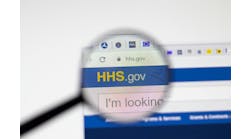A 2012 New York state law designed to curb prescription drug abuse, medical errors and fraud includes a mandate that all providers electronically transmit all prescriptions. The requirement was initially set to go into effect in March 2015, but because so few providers were ready, the deadline for compliance was delayed a year. But the March 27, 2016, deadline is looming and some providers are still scrambling to be ready in time.
A recent Wall Street Journal article noted that several health systems, including Mount Sinai Health System, Montefiore Health System, Northwell Health and NYU Langone have applied for waivers for some of their providers, seeking more time to comply.
“We’re all moving from living our lives on small pieces of paper to a digital world,” said Paul Testa, chief medical information officer at NYU Langone, told the Journal. “I think it’s good, but the devil is always in the details.”
The e-prescribing mandate applies to both controlled and non-controlled substances. In order to process electronic prescriptions for controlled substances (EPCS), a prescriber must select and use a certified electronic prescribing computer application that meets all federal requirements.
Last year I wrote about what a challenge it was for three-hospital Nebraska Methodist Health System in Omaha to enable EPCS. Its clinical informatics team found itself with a huge project management task to ensure compliance with all state and federal regulations and a smooth rollout. Yet they said the project was a triple win: patients don’t have to wait in a pharmacy as long and the process is easier for clinicians and other staff members — no more chasing down printed prescriptions. They have recorded a failure rate of less than 1 percent. When they do have issues, they are with second-factor authentication failing.
Their EPCS usage has grown from 137 in September 2014 to 2,470 in March 2015. A great side-benefit, they said, was that the overall e-prescribing rate at Nebraska Methodist, which was sitting at 42 percent in October 2014, had climbed to 81 percent.
Once the March 27 deadline has passed, we will check in with New York providers to see whether the transition was painful or, like the ICD-10 conversion, a lot of concern about something that turned out to be not so bad for organizations that prepared properly.

